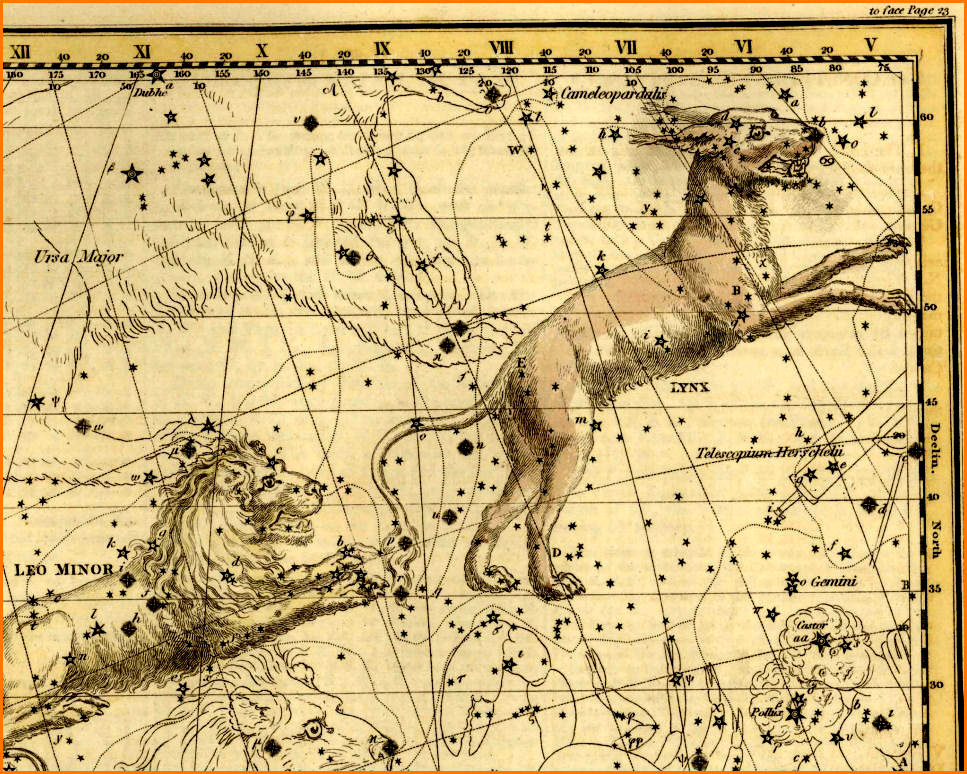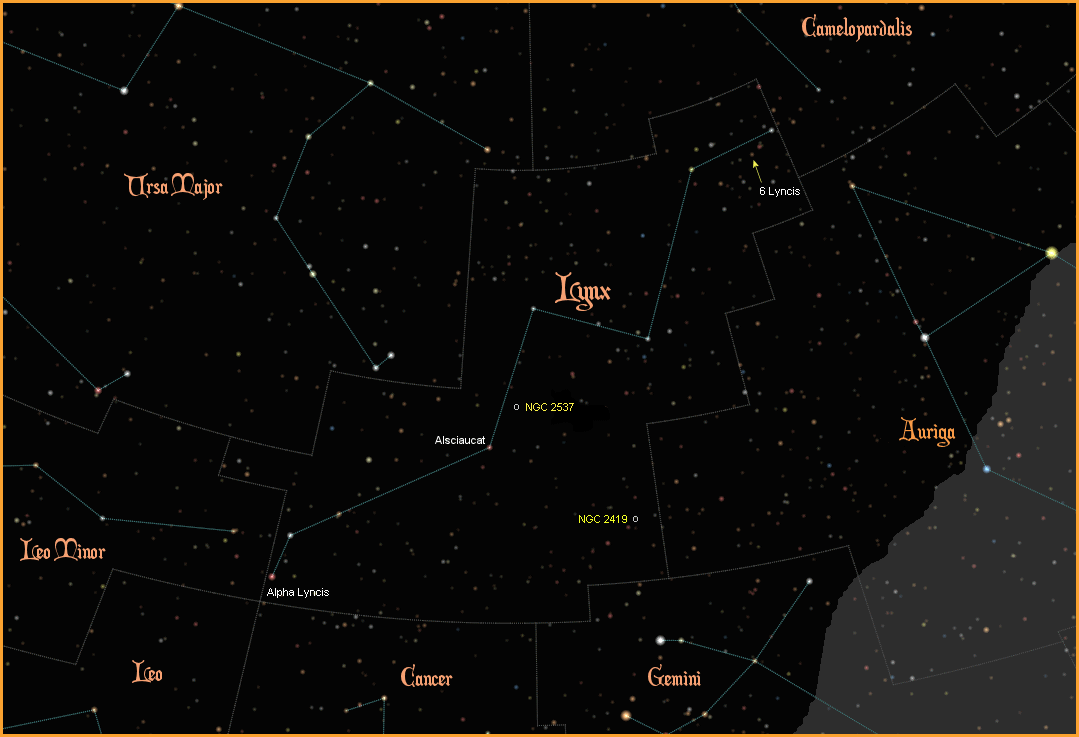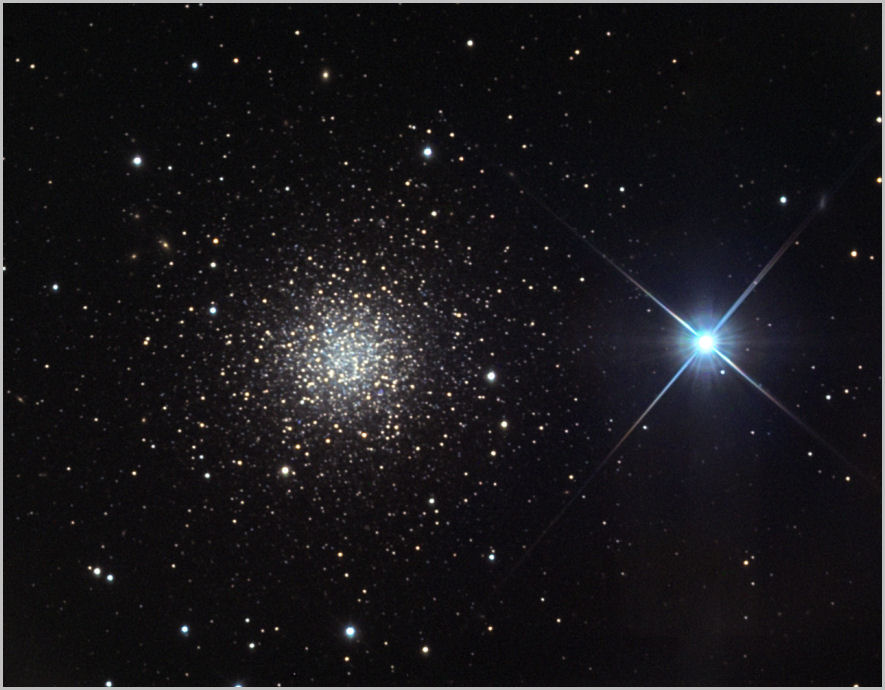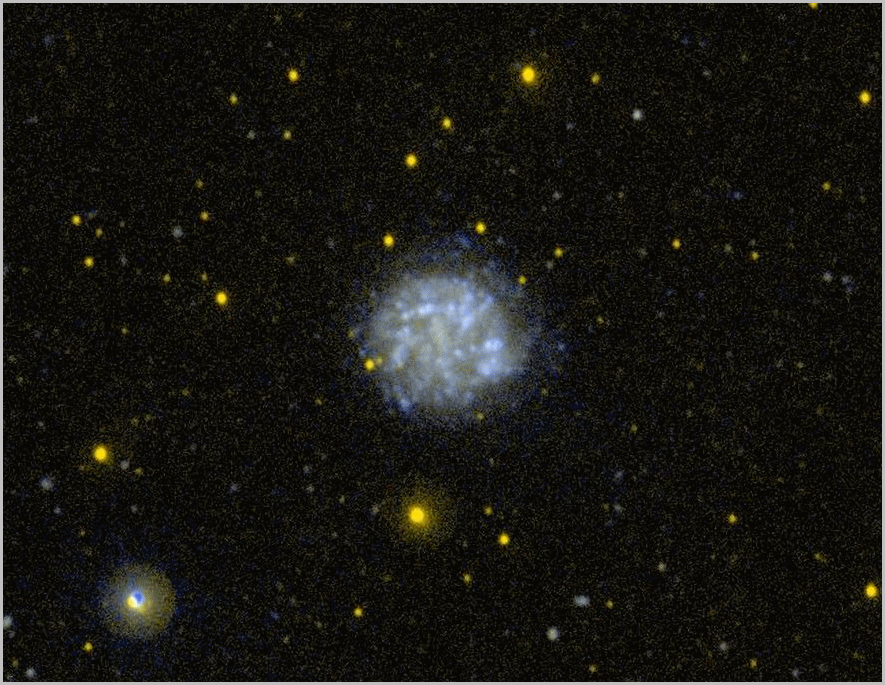| HOME |
|---|
LYNX
The Cat

Lynx - Celestial Atlas by Alexander Jamieson - 1822
| HOME |
|---|

Lynx is a moderately sized constellation that does not, at first glance, look very much like a lynx. Upon further study however, a lynx does emerge from the darkness. It all started back in the seventeenth century, when famed astronomer Johannes Hevelius was busily adding seven new constellations into the heavens: Leo Minor, Canes Venatici, Lacerta, Lynx, Scutum, Sextans and Vulpecula. When he began to study the faint stars between Ursa Major and Auriga he apparently declared, "anyone who wants to study the stars here should have eyes like a lynx," and the name proved to be more than appropriate.
If you look closely on a dark enough night, the zig zag pattern of the faint stars could in fact represent the leaping form of a wild cat, just as Jamieson depicts in his illustration above. The lynx hides in the shadows of the heavens just as it hides in the shadows of the forest, dappled and dark, blending into its surroundings, and difficult to see. And in keeping with the grand mythological tradition of the constellations, the name can be traced back to the Greek hero Lynceus, who purportedly could see in the dark.

The brightest star in the constellation has no name, but at least it bears the Alpha Lyncis designation, the only star in the constellation to be assigned a Bayer Greek letter nomenclature. It is a K6III orange giant with a magnitude of 3.14, located 220 light years away.
The fourth brightest star in the constellation, with the Flamsteed number "31 Lyncis", is named Alsciaukat, from the Arabic for the thorn. It is the only named star in the constellation, and harkens back to a time when it was considered part of the constellation Ursa Major. The faint zig zag line of stars that form the lynx was thought of as a hedge or barrier, keeping the great bear from escaping its eternal circling of the pole star Polaris. To dissuade the bear, a small red thorn was placed directly under his front paw. The thorn is a K4III orange giant, almost identical to its neighbour Alpha Lyncis, except much dimmer at magnitude 4.25, because it is much farther away at a distance of 384 light years.
There are seven stars in Lynx with confirmed planetary systems. The brightest of these stars is 6 Lyncis, its magnitude of 5.88 putting it at the very limit of naked eye visibility. It is a K0III orange giant, 182 light years away. The planet, 6 Lyncis b, is twice the size of Jupiter, taking 900 days to orbit its sun at about twice the distance Earth does.
The other planet hosting stars in Lynx are all very dim and far away, and all the planets discovered so far are all gas giants. For more information on these and other extrasolar planets, visit NASA's New Worlds Atlas, and The Open Exoplanets Catalogue.
There is a very unique globular cluster in Lynx, named NGC 2419. Unlike all the other globular clusters that surround our galaxy in a spherical cloud extending out to about 65,000 light years, NGC 2419 is all by itself, floating in intergalactic space about 250,000 light years away. Because it is so far outside the bounds of our galaxy, it is known as The Intergalactic Wanderer, and sometimes classified as an extragalactic object. It does, however, appear to be gravitationally bound to our Milky Way Galaxy, although the very great size of its elliptical orbit means it takes about 3 billion years to complete one trip around the galactic centre. Despite its great distance, NGC 2419 has an apparent magnitude of 9.06, making it accessible to small telescopes.

Some like to see the constellation Lynx as a trail of little paw prints across the sky, like the tracks of a lynx in the snow, and as it turns out, there is an irregular galaxy within the constellation, NGC 2537, that does resemble a paw print. And it just happens to be very close to the thorn (Alsciaukat), and the paw of Ursa Major, the big bear, poised above it. Naturally, it was named The Bear Paw Galaxy. It is classified as a blue compact dwarf galaxy, residing at a distance of about 20 million light years, with an apparent magnitude of 12.3.

|
|
|
|
|
|